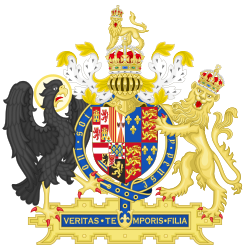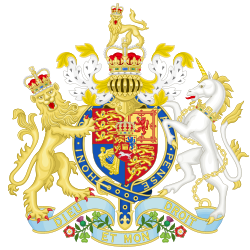History

| Thames Watermen Act 1514 | |
|---|---|
| Act of Parliament | |
 | |
| Long title | Acte concernyng Watermen on the Teamys. |
| Citation | 6 Hen. 8. c. 7 |
| Territorial extent | England and Wales |
| Dates | |
| Royal assent | 31 March 1515 |
| Commencement | 5 February 1515 [a] |
| Repealed | 1 August 1827 |
| Other legislation | |
| Repealed by | Thames Watermen and Lightermen Act 1827 |
| Relates to | |
Status: Repealed | |
| Text of statute as originally enacted | |
| Thames Watermen Act 1555 | |
|---|---|
| Act of Parliament | |
 | |
| Long title | An Act touching Watermen upon the River of Thames. |
| Citation | 2 & 3 Ph. & M. c. 16 |
| Territorial extent | England and Wales |
| Dates | |
| Royal assent | 9 December 1555 |
| Commencement | 24 May 1556 [b] |
| Repealed | 1 August 1827 |
| Other legislation | |
| Repealed by | Thames Watermen and Lightermen Act 1827 |
| Relates to | |
Status: Repealed | |
| Text of statute as originally enacted | |
| Thames Watermen Act 1604 | |
|---|---|
| Act of Parliament | |
 | |
| Long title | An Acte concerninge Wherrymen and Watermen. |
| Citation | |
| Territorial extent | England and Wales |
| Dates | |
| Royal assent | 7 July 1604 |
| Commencement | 19 March 1604 [a] |
| Repealed | 1 August 1827 |
| Other legislation | |
| Amended by | Thames Watermen Act 1705 |
| Repealed by | Thames Watermen and Lightermen Act 1827 |
| Relates to | |
Status: Repealed | |
| Text of statute as originally enacted | |
| Thames Watermen Act 1705 | |
|---|---|
| Act of Parliament | |
 | |
| Long title | An Act for the better ordering and governing the Watermen and Lightermen upon the River of Thames. |
| Citation | |
| Territorial extent | England and Wales |
| Dates | |
| Royal assent | 19 March 1706 |
| Commencement | 25 October 1705 [a] |
| Repealed | 1 August 1827 |
| Other legislation | |
| Amends | Thames Watermen Act 1604 |
| Repealed by | Thames Watermen and Lightermen Act 1827 |
| Relates to | |
Status: Repealed | |
| Text of statute as originally enacted | |
| Thames Watermen Act 1736 | |
|---|---|
| Act of Parliament | |
 | |
| Long title | An Act for regulating the Company of Watermen, Wherrymen, and Lightermen, rowing on the River Thames, between Gravesend, in the County of Kent, and Windsor, in the County of Berks. |
| Citation | 10 Geo. 2. c. 31 |
| Territorial extent | Great Britain |
| Dates | |
| Royal assent | 21 June 1737 |
| Commencement | 24 June 1737 [e] |
| Repealed | 1 August 1827 |
| Other legislation | |
| Repealed by | Thames Watermen and Lightermen Act 1827 |
| Relates to | |
Status: Repealed | |
| Text of statute as originally enacted | |
| Thames Watermen and Lightermen Act 1827 | |
|---|---|
| Act of Parliament | |
 | |
| Long title | An Act for the better Regulation of the Watermen and Lightermen on the River Thames, between Yantlet Creek and Windsor. |
| Citation | 7 & 8 Geo. 4. c. lxxv |
| Territorial extent | United Kingdom |
| Dates | |
| Royal assent | 14 June 1827 |
| Commencement | 1 August 1827 [f] |
| Other legislation | |
| Repeals/revokes | |
| Repealed by | Watermen's and Lightermen's Amendment Act 1859 |
Status: Repealed | |
| Text of statute as originally enacted | |
| Watermen's and Lightermen's Amendment Act 1859 | |
|---|---|
| Act of Parliament | |
 | |
| Long title | An Act for the better Regulation of Watermen, Barge Owners, and others connected with the Navigation of the River Thames between Teddington Lock and Lower Hope Point. |
| Citation | 22 & 23 Vict. c. cxxxiii |
| Territorial extent | United Kingdom |
| Dates | |
| Royal assent | 13 August 1859 |
| Commencement | 13 August 1859 [g] |
| Other legislation | |
| Amended by | |
Status: Amended | |
CWL was established in the medieval period to support and maintain rights of the river workers. The two main occupations were that of watermen and lightermen. [1] The watermen transferred passengers across and along city centre rivers and estuaries. Most notable are those on the Thames and Medway. Other rivers such as the Tyne and Dee in Wales had watermen who formed guilds in medieval times. [2] Lightermen transfer goods between ships and quays (including wharves, jetties and piers) –they specifically loaded (originally 'laded') and unloaded ('alighted') the ships. Laded survives in the phrases bill of lading and fully laden) In the Port of London they overwhelmingly used flat-bottomed barges, called lighters. [2]
The King's Bargemaster and Royal Watermen are chosen from their number.
The company's centuries-spanning apprenticeship index is a popular genealogy source. [2] [3]
Annual race
The Doggett's Coat and Badge, which was first raced in 1715, is the oldest continuously-run river race. It claims to be the oldest continually staged annual sports event; [4] though single sculls replaced the original skiffs or lighters.

The winner's prize is a watermen's red coat plus a silver badge, displaying the White Horse of Hanover and the word "Liberty", in honour of George I's coronation. Each completing contestant of the six apprentice competitors receive a miniature of a Doggett's Badge for their lapel in a ceremony at Watermen's Hall, in silver for the winner and in bronze for the others. The Fishmongers' Company sponsors the awards, rewarding the rowing clubs of the top four with tiered prizes of £1,000, £600, £400, and £200. [5]
Three public houses retain memorabilia of the race :
- Doggett's Coat & Badge, south-side of Blackfriars Bridge close to The Shard, London SE1.
- The Coat & Badge, Putney , London SW15.
- The Doggett Coat and Badge, Margate, lower reaches of the Thames Estuary.
Swan Upping
Swan Upping is the practice by which the swans found on the river Thames between Sunbury and Abingdon are caught, ringed, and released. The skiffs used for this practice by the King's Marker of the Swans are rowed by a team of oarsmen, from the Watermen and Lightermen. [6]
The Tudor Pull
Every year the Thames Traditional Rowing Association organise a ceremony called the Tudor Pull, in which the Royal Barge Gloriana is escorted down the Thames by cutters, all crewed by the King's Barge Master and members of the Watermen & Lightermen Company. They transport 'The Stela' - a section of ancient wooden water pipe - from Hampton Court Palace to the Tower of London, where it is handed over to the Duty Governor of the Tower and the Yeoman Warders. [7] [8]
Mayoral duties
Every June, since 1381, the company holds the Knollys Rose Ceremony when a well-dressed procession presents a fresh rose to the incumbent Lord Mayor of London at his official residence, the Mansion House. [2] CWL also takes part in the annual Lord Mayor's Show.

